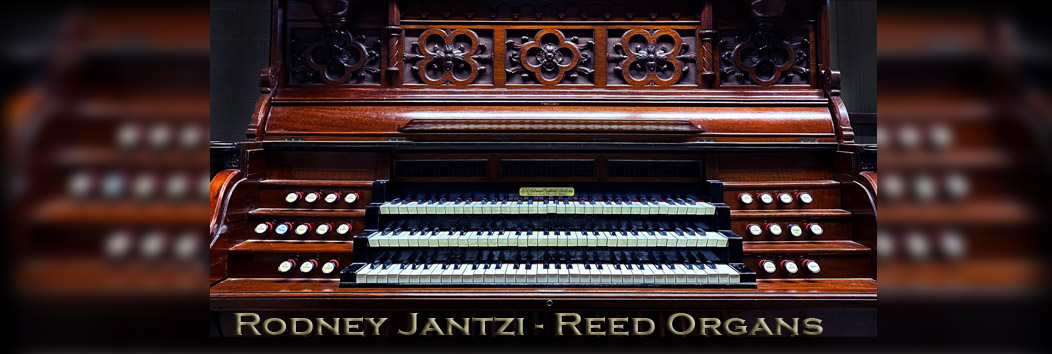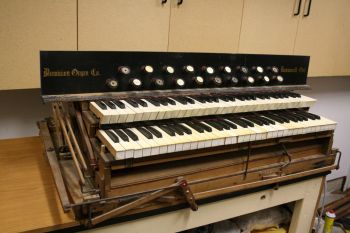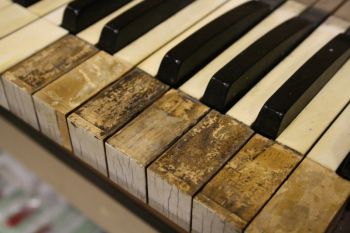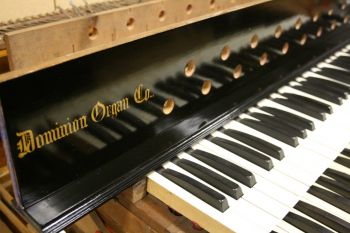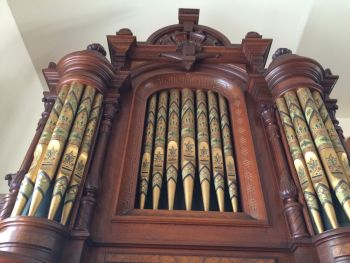The Restoration of the Moore Museum Dominion Organ

Welcome!
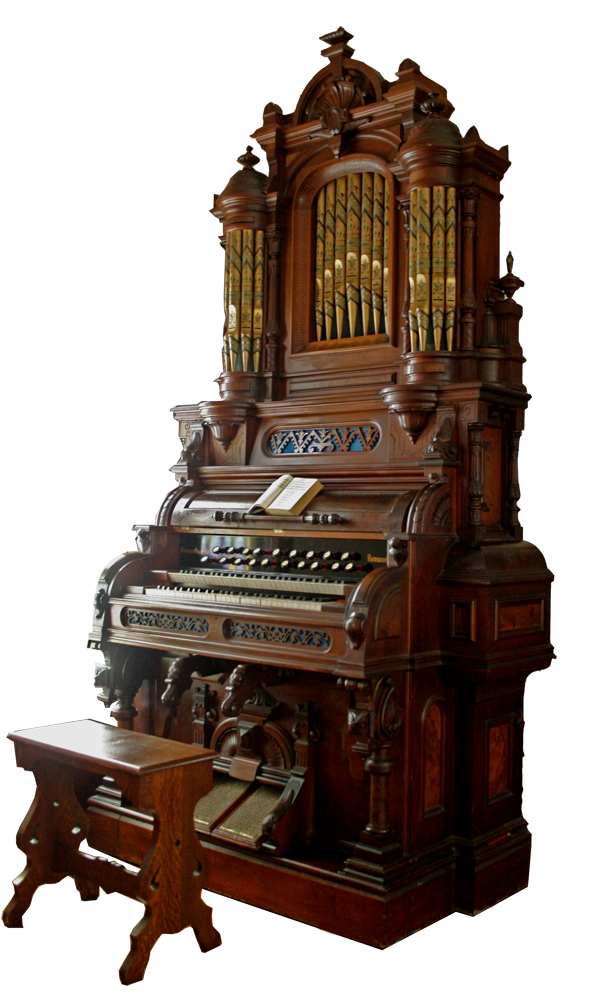
This was not your average reed organ, it was the most massive and decorated Canadian made organ I have seen. Immediately I had a number of nick names for it, such as the "Grand Daddy Dominion", or GDD for short.
Later that summer, my wife and I took a day trip to visit the museum, to see this organ and to register it and the others with the ROS database. There are a number of reed instruments located there of various types - but this one stood out among them all. Unfortunately, it barely could make a sound other than a weak moan with a hissing of air coming from the upper action.
This organ was originally purchased in 1881 by the Presbyterian church in Ridgetown, Ontario, who used it for 18 years. Around 1899, the organ was sold to the St. Andrew's Presbyterian Church in Mooretown for $100, I can only assume that Ridgetown took a huge loss on the original purchase price. It was then used for the next 50 years in Mooretown, but by the 1950s the organ became too difficult to pump.
In February of 1964, the organ was placed on loan to the Oil Springs Museum. In 1975, the organ was brought back to Mooretown and has been at the museum ever since.
While the organ has been at the museum, there have been various attempts to get it to sound again, but it still could not get the wind needed to display the organ at its full potential.
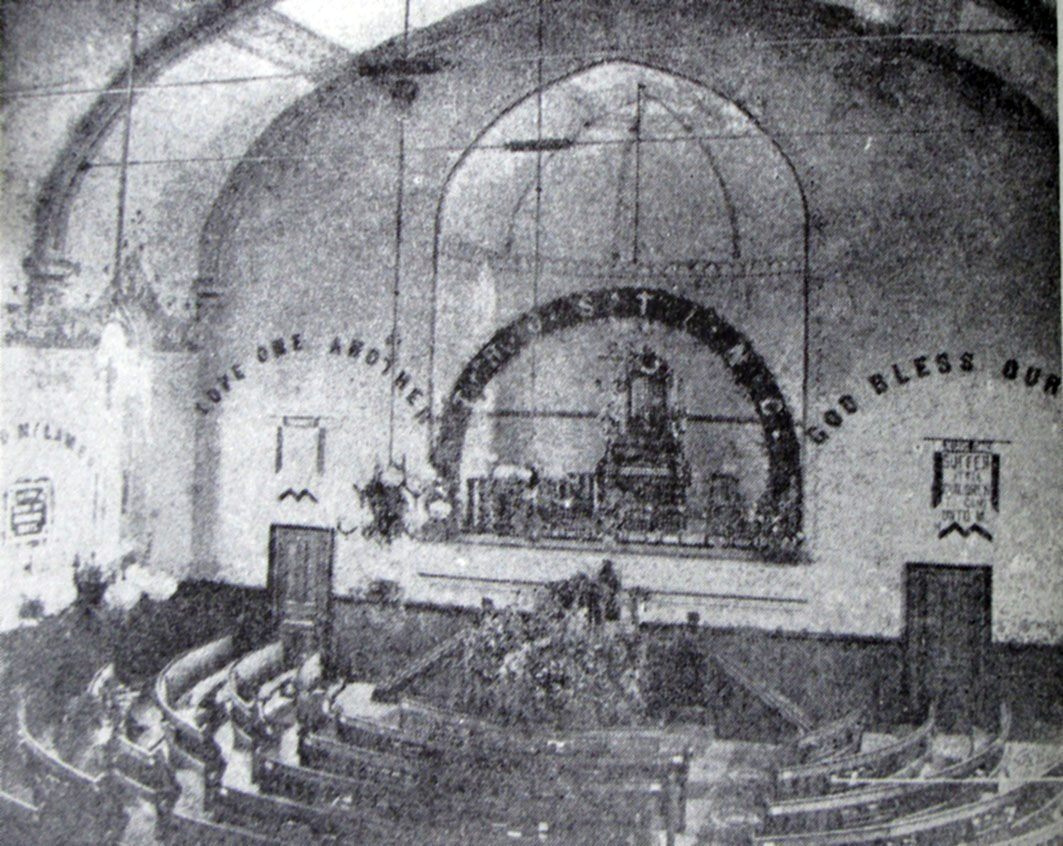
I consider it an honour and privilege to restore this magnificent instrument. This website is the picture and video diary of the restoration, and also has some extra information about the Dominion Organ & Piano Co. in Bowmanville, Ontario.
Restoration Pictures
The story continues in the albums of 538 pictures available below:
Dominion Information
Dominion Organ and Piano Co. Instrument manufacturer. Although the date has not been substantiated, the firm was probably founded in 1870 in Oshawa as (A.M.) Darley and (William) Robinson, later called the Oshawa Organ and Melodeon Manufacturing Co.
The firm relocated in Bowmanville, Ont, in 1873 and was renamed the Dominion Organ Co in 1875. It specialized in cabinet reed organs. These were distinctive for the reed-qualifying tubes which replaced tuning slides to give even-register voicing.
In 1876 a 19-stop Dominion organ with 12 sets of reeds won an international medal at the Philadelphia Centennial Exhibition. Prizes in Paris, London, and Chicago followed. A piano factory was added in 1879, and two-manual organs for church use were introduced in the 1880s. The exceptional quality of Dominion's square grand and upright pianos made the company second only to Bell as a Canadian instrument producer and exporter.
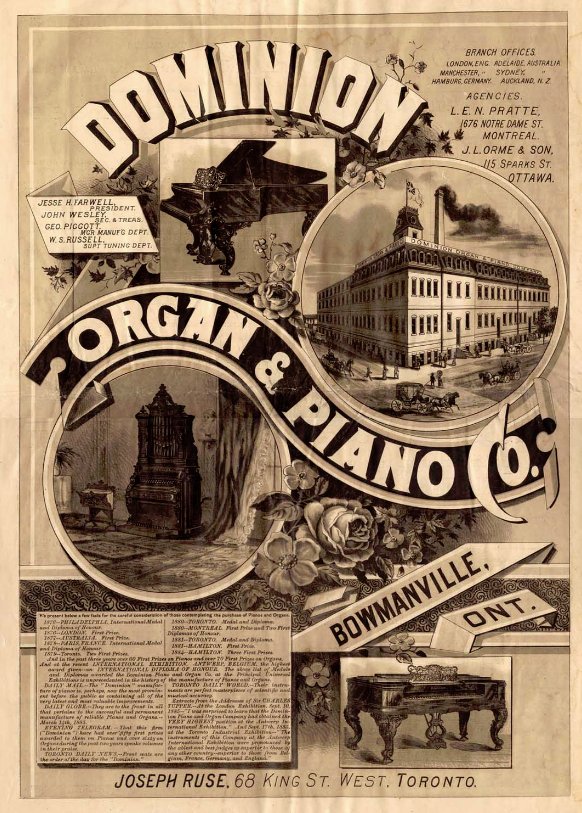
Before World War I it maintained agencies in Europe, Australia, New Zealand and the West Indies. As a sales promotion the firm published complimentary piano music as well as the Dominion Organ and Piano Company's Modern Method for Reed Organ, possibly the first such work to appear in Canada. After several changes of owner the company was taken over in 1901 by J.W. Alexander. Later models of Dominion organs displayed a declining tonal quality, although Dominion pianos retained their reputation.
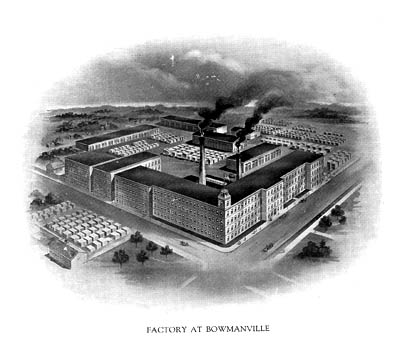
Demand decreased during the Depression of the mid-1930s, and even after introducing other lines, including the successful Mitchell phonograph, the firm suffered as a result of competition from radio and a scarcity of capital. The company closed in March 1936.
Author: Melva Graham, Florence Hayes - The Canadian Encyclopedia
